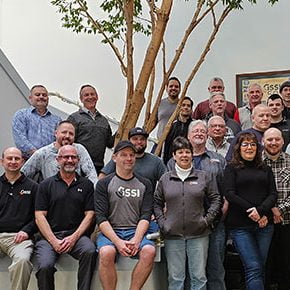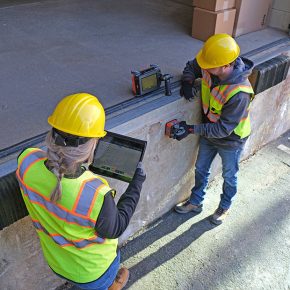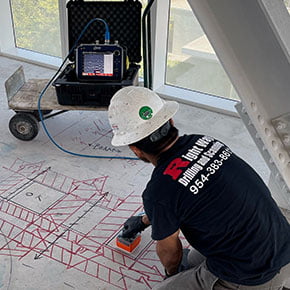GSSI Academy: Using GPR to Identify Types of Utilities
The GSSI Academy is here again to provide GPR theory basics and key concepts of ground penetrating radar. In this post, we discuss how to determine different material types when conducting underground utility locating surveys.
GPR Theory: Determining Material Types
One of the most critical tasks in using Ground Penetrating Radar, or GPR, technology is that of determining materials types for materials in the ground. Given that GPR technology works by transmitting and receiving a high frequency electromagnetic wave through the ground, distinguishing between different materials – typically air, water, and metal – is possible by analyzing the degree of difference in the dielectric constant of the material. Dielectric constant measures how easily radar waves move through a material; for more in-depth information about it, check out this blog post.
Air, Water, or Metal?
For underground utility locating, the three main material types encountered are metal, air, and water. Determining material type is possible by analyzing dielectric change, or the change in how easily radar waves penetrate the ground as compared with the material in the ground. The larger the dielectric change, the stronger the reflection and the brighter the image produced on the GPR control unit. Greater change produces brighter targets on screen, and smaller changes produce dimmer targets. The color of the target onscreen indicates whether the dielectric change is positive or negative.

Metal has an infinite dielectric constant – GPR cannot pass through metal because it’s a perfect reflector for GPR energy – and so it will be shown onscreen as the brightest possible positive dielectric change.

Whereas an air-filled PVC pipe, through which the radar energy moves easily, will demonstrate a negative change, since the dielectric constant of air is less than that of ground materials. The data image below shows a water-filled PVC pipe that clearly identifies the top and bottom of the pipe.

The same is true when identifying underground voids. Below is an example of a well-defined void underneath a reinforced concrete slab with an asphalt overlay.

Finally, in the case of a water-filled PVC target, the screen will show a positive change like that of metal because water has a higher dielectric constant than any ground materials. Determining water targets compared to metal, however, is possible because while water has a high dielectric constant, it is not impermeable to GPR and thus will show up as a dimmer positive target on the screen of a GPR unit.

Interested in learning more? The GSSI Academy holds hundreds of GPR classes throughout the year in Nashua, NH, Henderson, NV, and on-sites around the world.
Related products: UtilityScan, UtilityScan Pro



